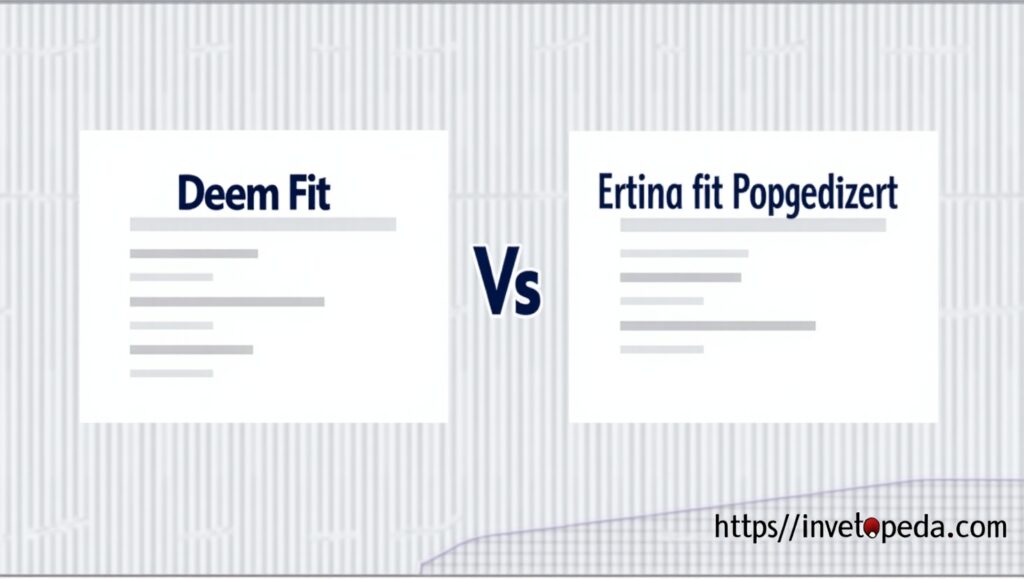Understanding the phrase “deem fit” can help you sound more confident and thoughtful in both everyday conversations and formal settings. The deem fit meaning is to consider something suitable or appropriate based on personal judgment.
Whether you’re making a decision in the workplace, choosing what’s right for a situation, or acting with discretion and responsibility, this phrase is a great way to express independent thinking. It’s often used in legal contexts, professional scenarios, and even in daily life.
Learning how to use “deem fit” and its synonyms like see fit or consider appropriate will expand your vocabulary and improve your communication. This guide will show examples and explain where and how to use it properly.
Deem Fit Meaning
The phrase “deem fit” means to consider something suitable or appropriate. It’s often used when someone makes a choice based on their judgment. For example, a manager might deem it fit to give an employee a day off after hard work. Or, you might deem it fit to wear formal attire to a wedding because it suits the occasion.
In daily use, you can replace “deem fit” with “think is right” or “find suitable.” For example, “I deem it fit to study tonight for the test” can also be said as “I think it’s right to study tonight for the test.” This phrase works well in both formal and informal contexts to show decision-making or personal choice.
Examples:
- “The teacher deemed it fit to cancel the quiz due to the school event.”
- “After reviewing your work, we deem you fit for this project.”
Exploring the Meaning of “Deem Fit”
The phrase “deem fit” is used when someone makes a decision they believe is right for a situation. It shows that a person is trusted to use their own judgment, based on their experience and understanding. The deem fit meaning is all about choosing what’s appropriate or suitable, whether in everyday life or more serious matters. Sometimes, this phrase is also used in legal settings, where decisions must follow rules or laws. In both cases, it highlights the ability to think independently and choose the best course of action for the situation.
To help you build a better understanding of deem fit, it’s important to know that the phrase often involves the delegation of decision-making to people who are trusted to make good choices. These individuals are seen as capable and experienced enough to decide what’s right in a given situation. The deem fit meaning goes beyond just personal judgment; it also includes making decisions that align with accepted standards, rules, or what’s generally seen as appropriate. It reflects both personal thinking and the broader expectations or guidelines in place.
“ Deem fit is an expression that conveys the idea of making a judgement or decision for oneself, ensuring that the choice is suitable for the particular situation. This phrase communicates trust in a person’s capacity to make an appropriate decision based on personal convictions, experience, and understanding of the situation.”
When it comes to the delegation of decision-making, the idea of “deem fit” gives people the freedom to make choices based on what they believe suits the situation. They use their own experience and judgment to decide what’s best.
With this freedom also comes responsibility; they’re expected to make decisions that reflect not just their own values but also those of the group or organization they’re part of. The deem fit meaning here highlights trusting someone to act wisely and make choices that fit the moment.
- Relying on personal judgment to make choices that support the mission and principles of the group or community
- Weighing different elements, including how the decision may affect others involved or impacted
- Ensuring actions align with legal guidelines while still allowing room for individual decision-making
In summary, the phrase “deem fit” allows people to make smart choices on their own, using their beliefs, experience, and knowledge of the situation. It shows trust in someone’s ability to decide what’s best whether it’s for themselves, their group, or even in legal matters.
How “Deem Fit” Enhances Autonomy in Decision-Making

Using the phrase “deem fit” helps give people more freedom to make their own decisions. It means trusting someone to choose what they believe is best based on their own understanding and experience. This kind of trust shows a strong level of independence and confidence in the person’s judgment. Instead of always following strict rules, they’re allowed to use their own thinking to handle the situation.
The deem fit meaning is all about this idea letting people decide what’s right in different situations. Here are a few examples:
- Company management: Team leaders are trusted to make choices that match company goals, using their experience.
- Public policy: Officials make decisions that suit local needs, helping communities more effectively.
- Personal life: People make daily choices based on what matters to them, leading to a more meaningful life.
”Autonomy is trust. Trusting someone with the task and trusting them to finish it. It’s a declaration of confidence. The person given autonomy gains confidence in their actions and decisions.” Simon Sinek, leadership expert and author
In the end, the idea behind “deem fit” gives people the power to make their own choices and take responsibility for the results. This kind of freedom is important for growing both personally and professionally. It helps build critical thinking, boosts confidence, and teaches flexibility in a world that’s always changing.
Understanding “Deem Fit” in Legal Contexts
In legal situations, the phrase “deem fit” has a more specific meaning. It refers to making decisions that follow the law and are not influenced by personal opinions or interests. Lawyers, judges, and other legal experts are expected to act according to rules and regulations. The deem fit meaning in this context is about doing what is legally right and fair. It’s important to understand this, as many court decisions are based on what the judge or court deems fit under the law.
The Importance of Adhering to the Law When Deeming Fit
When using “deem fit” in legal settings, it’s important that decisions follow the rules and standards set by the law. Sticking to these legal guidelines helps make sure choices are fair and not biased. For example, High Courts can give orders they deem fit, and these become official legal actions. If someone makes a decision that doesn’t follow the law while using their judgment, it can lead to legal trouble or make the decision seem invalid.
Examples of “Deem Fit” in Court Decisions
Many real-life court cases and legal documents show that the deem fit meaning often relates to a person’s legal ability to take part in a trial or the authority given to officials to make certain decisions like appointing judges or dissolving committees within legal boundaries. Here are a few clear examples:
- A judge issuing a protective order in a case they believe is necessary to prevent harm.
- The International Court of Justice decides the best next steps in a case based on what it finds fair under international law.
- A family court assigning a guardian ad litem, choosing someone considered suitable to protect a child’s best interests.
In all these cases, “deem fit” reflects fair and lawful decision-making rooted in justice.
“Deem fit” in legal contexts emphasizes the importance of acting in accordance with legally accepted ways, ensuring that personal interests do not sway decisions, and adhering to established laws and regulations when making determinations. This proper understanding of “deem fit” and its application can ensure not only law adherence but also the credibility and integrity of court decisions.
“Deem Fit” vs “Deem Fit and Proper”: A Comparative Look

At first look, the expressions “deem fit” and “deem fit and proper” might seem alike, but they carry different meanings in how decisions are made. Knowing the difference between them is especially important in official or legal settings where the outcome can have serious effects.
The deem fit meaning refers to allowing someone to make choices based on their own judgment. In contrast, “deem fit and proper” means that decisions must meet specific rules or accepted standards within that area. This second phrase focuses on whether someone is suitable and safe for a role or action, leaving less room for personal interpretation and requiring more strict compliance with guidelines.
“Deem fit” enables decision-making rooted in personal judgement, while “deem fit and proper” demands adherence to recognized practices and protocols.
To better understand the subtle differences between these two terms, let’s break them down through a side-by-side comparison, focusing on legal authority and commonly accepted norms.
- Legal Authority: In legal situations, the deem fit meaning allows for broader flexibility, letting individuals rely on their own judgment as long as they remain within legal boundaries. On the other hand, the term “deem fit and proper” places tighter restrictions, requiring decisions to strictly follow the laws and official guidelines specific to that legal system.
- Common Standards: The phrase “deem fit” offers more personal freedom to make choices based on one’s insight or understanding. In contrast, “deem fit and proper” demands that choices align with widely accepted rules, norms, and safe practices. This highlights the need for a more cautious and standardized approach when using the term “deem fit and proper.”
Recognizing how the deem fit meaning differs from “deem fit and proper” can help you apply them accurately in different scenarios especially in legal environments or when following specific regulations.
Practical Examples of Using “Deem Fit” in Sentences
To better grasp how the phrase “deem fit” works in everyday speech, let’s look at some real-life examples where people are given the freedom to make decisions on their own. These examples show how the deem fit meaning relates to giving someone the authority to act based on their own knowledge and judgment.
- In schools: “The teacher has the freedom to mark papers and give comments in any way they find suitable.”
- In politics: “The leader has the right to choose people for official roles if they believe those individuals are right for the job.”
- At work: “A lawyer can charge fees based on their services and what they think is appropriate, using their past work as a guide.”
- In healthcare: “Doctors are trusted to choose the right treatment or medicine they believe is best for their patient’s condition.”
- In finance: “Company board members can use funds for projects they believe are important and align with company goals.”
Each situation above shows how “deem fit” is commonly used in different areas of life, underlining its value in letting people act based on their own understanding and experience.
“By examining how “deem fit” is used in sentences across multiple fields, we can appreciate its versatility and impact on fostering autonomous decision-making.”
Looking at real-world situations where “deem fit” is used helps us understand how it gives people the power to decide things on their own. By learning how it works in different settings, you’ll feel more sure about using it in both speaking and writing. The deem fit meaning shows that someone has the right to act based on their own judgment, which is especially useful when clear rules aren’t set.
Distinguishing Between “Deem Fit” and “See Fit”
When comparing “deem fit” and “see fit,” it’s important to understand that even though both phrases mean the same and can be swapped in many situations, they differ in tone and usage.
The phrase deem fit, meaning to judge something appropriate or suitable, is usually used in more serious or professional contexts, especially legal ones where it carries a formal tone. On the other hand, “see fit” sounds more casual and is commonly used in everyday speech or informal writing.
““Deem fit” has a higher degree of formality, while “see fit” is more casual and suited for everyday use.”
Formality and Context in the Usage of “Deem Fit”
Grasping the subtle contrast between “deem fit” and “see fit” can greatly improve how you express yourself, helping you pick the right phrase depending on how formal the situation is. Let’s look at a few examples to better understand:
- Authorities might deem it fit to introduce fresh policies in light of citizens’ feedback.
- A family may see it fit to choose a specific treatment plan for their child’s health issue.
In the first case, the phrase is used in a formal government setting. The deem fit meaning here relates to making a decision based on judgment and authority. In contrast, the second example shows a more relaxed and personal use of “see fit,” reflecting individual preference.
By learning when to use each phrase, you can improve your word choice, ensuring your language fits the tone whether you’re speaking professionally or casually.
Are “Deem Fit” and “Deemed Fit” Interchangeable?
When looking into the expressions “deem fit” and “deemed fit,” it’s important to grasp how verb tense and sentence voice affect their usage. Though these phrases might look alike, they fulfill distinct grammatical roles depending on the structure and context in which they’re used.
The deem fit meaning refers to making a judgment based on one’s authority or discretion, and whether it’s used actively (“deem fit”) or passively (“deemed fit”) can change the sentence’s tone and function.
Understanding Tense and Voice in “Deem Fit” Usage
The phrase “deem fit” is usually used when talking about current situations or decisions being made in the present. On the other hand, “deemed fit” refers to something that has already happened or been decided, and it’s often found in sentences using the passive voice. This key difference sets it apart from the more direct use of “deem fit.” To better understand the deem fit meaning, take a look at these examples that highlight how tense and sentence structure affect its usage.

“The manager has the prerogative to make changes as they deem fit.”
“The candidate was deemed fit for the position after their performance in the interview.”
Tools like Google Ngram Viewer show that “deem fit” is more commonly used in most situations. Still, “deemed fit” is also correct and useful especially when talking about things that have already happened.
- For example, someone who applied for a job and was found qualified might be deemed fit for that role.
- Similarly, a group of experts who previously supported a project may have deemed fit its execution at that time.
To sum up, while both phrases seem similar, they differ in tense and voice. Knowing the deem fit meaning which is to judge something as suitable or appropriate helps you pick the right version for past or present situations, making your communication clearer and more effective.
Expanding Vocabulary: Synonyms for “Deem Fit”
Improving your ability to communicate clearly often means broadening your vocabulary and using alternative expressions that still reflect your intended point. When it comes to the phrase “deem fit” which means to judge something as suitable or appropriate there are several other ways to express the same idea without changing its meaning.
Alternative expressions like “see fit,” “consider necessary,” “judge appropriate,” and “regard as suitable” all reflect the notion of making decisions based on personal or professional judgment. You might also use “deem useful” when referring to actions viewed as beneficial or advantageous, offering even more versatility in your language.
Using these different expressions in your writing or speech allows for more variety and helps avoid repetition. More importantly, practicing with these phrases strengthens your ability to express autonomous decision-making the essence of the deem fit meaning in a clearer and more engaging way across various situations.
Frequently asked questions
How do you use deemed fit in a sentence?
“She was deemed fit for the role after passing all evaluations and meeting the required qualifications and expectations.”
How to use deem in a sentence?
“The committee may deem the proposal acceptable if it meets all necessary ethical, financial, and structural standards.”
What does my deem mean?
“My deem” informally suggests a personal judgment, like saying “I believe” or “I think something is appropriate or true.”
What is the meaning of fit in simple words?
Fit simply means being suitable, healthy, or appropriate for a particular purpose, role, task, or environment.
Conclusion
In conclusion, understanding the phrase “deem fit” which means to judge something as suitable or appropriate is essential for clear and effective communication, especially in formal or professional contexts. Whether distinguishing between similar expressions like “see fit” or exploring its use in present versus past tense, recognizing how and when to use “deem fit” improves your language precision.
By examining real-life examples and exploring synonyms, you gain the tools to express autonomous decision-making more confidently. Knowing the deem fit meaning also helps you adapt your tone to the right context, making your speech and writing more impactful and contextually accurate.

